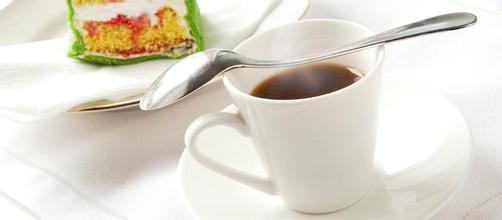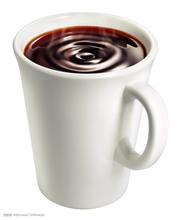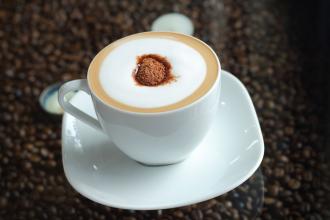The History and Culture of Chinese Coffee when was coffee introduced into Europe
A cafe in Palestine
In 1570, when the Turkish army besieged Vienna and failed to retreat, a bag of black seeds was found in the Turkish army's barracks. No one knew what it was. A Polish man who had lived in Turkey took the bag of coffee and opened his first coffee shop in Vienna. At the end of the 16th century, coffee began to spread into Europe on a large scale through Italy in the name of "Islamic wine".
It is said that in 1600, some Catholic religious people thought that coffee was a "devil's drink" and encouraged the then Pope Clemon VIII to ban it, but after the pope tasted it, he thought it was drinkable and blessed it, so coffee became more and more popular in Europe.
The cultivation and production of coffee in the 17th century has always been monopolized by Arabs and is of great value in Europe. Only the upper echelons of Europe can drink coffee. Until 1690, a Dutch captain sailed to Yemen, got some coffee seedlings and began to plant successfully in Dutch India (present-day Indonesia). In 1727, the wife of a diplomat in Dutch Guiana gave some coffee seeds to a Spaniard in Brazil, where he planted them with good results. The climate in Brazil is very suitable for coffee growth, and coffee has spread rapidly in South America since then. Coffee, which has fallen in price due to mass production, began to become an important drink for Europeans.
Chinese
Overseas Chinese in Indonesia drank coffee every day in the 1960s, and Taiwanese began to drink coffee in the 1970s. It has a history of about 40 years now. Whether Hong Kong introduced coffee earlier needs textual research. The mainland began to rise in the late 1990s. At present, many cafes have sprung up, young people have gradually accepted coffee drinks and there are a variety of places to drink coffee, including restaurants, cafes, dim sum, cake bakeries and so on.
Coffee ingredients editor
Caffeine: it has a particularly strong bitter taste and stimulates the central nervous system, heart and respiratory system. Appropriate amount of caffeine can also reduce muscle fatigue and promote digestive juice secretion. Because it promotes kidney function, it is diuretic and helps the body to expel excess sodium ions from the body. But eating too much can lead to caffeine poisoning.
Tannic acid: the boiled tannic acid will decompose into pyrouric acid, so the coffee that has been brewed for too long will taste worse.
Fat: the most important ones are acid fat and volatile fat.
Acidic fat: that is, fat contains acid, its strength will vary according to the type of coffee.
Volatile fat: is the main source of coffee aroma, will emit about 40 aromatic substances.
Protein: the main source of calories, the proportion is not high. Most of the protein in coffee powder will not dissolve out when brewing coffee, so the intake is limited.
Sugar: coffee beans contain about 8% sugar. After baking, most of the sugars are converted to caramel, which browns the coffee and combines with tannins to produce sweetness.
Fiber: the fiber of raw beans will be carbonized after baking and combine with caramel to form the hue of coffee.
Minerals: contains a small amount of lime, iron, phosphorus, sodium carbonate, etc.

Important Notice :
前街咖啡 FrontStreet Coffee has moved to new addredd:
FrontStreet Coffee Address: 315,Donghua East Road,GuangZhou
Tel:020 38364473
- Prev

What is the purpose of coffee baking?
Simple example: for example, the dehydration period of raw coffee beans. Some people will use high heat dehydration, others will use low heat dehydration, which is difficult to determine in the form of operation. Another example: the energy adjustment during the explosion period, as well as the choice of roasting degree, make the coffee roasting process as complicated as a mystery, and each speaks his own words. So what is a good baking? Who will give the bid?
- Next

Is the milk of the coffee flower boiled?
The milk is initially cold (preferably refrigerated at 5 ℃), which prolongs the foaming time so that it foams thoroughly and finely, then opens the steam valve and foams the milk. When foaming is consistent with our body temperature (feel neither hot nor cold), the foaming is cut off. Next, let's talk about the temperature at the end of milking. In fact, there are many theoretical theories about this temperature.
Related
- Does Rose Summer choose Blue, Green or Red? Detailed explanation of Rose Summer Coffee plots and Classification in Panamanian Jade Manor
- What is the difference between the origin, producing area, processing plant, cooperative and manor of coffee beans?
- How fine does the espresso powder fit? how to grind the espresso?
- Sca coffee roasting degree color card coffee roasting degree 8 roasting color values what do you mean?
- The practice of lattes: how to make lattes at home
- Introduction to Indonesian Fine Coffee beans-- Java Coffee producing area of Indonesian Arabica Coffee
- How much will the flavor of light and medium roasted rose summer be expressed? What baking level is rose summer suitable for?
- Introduction to the characteristics of washing, sun-drying or wet-planing coffee commonly used in Mantenin, Indonesia
- Price characteristics of Arabica Coffee Bean Starbucks introduction to Manning Coffee Bean Taste producing area Variety Manor
- What is the authentic Yega flavor? What are the flavor characteristics of the really excellent Yejasuffi coffee beans?

